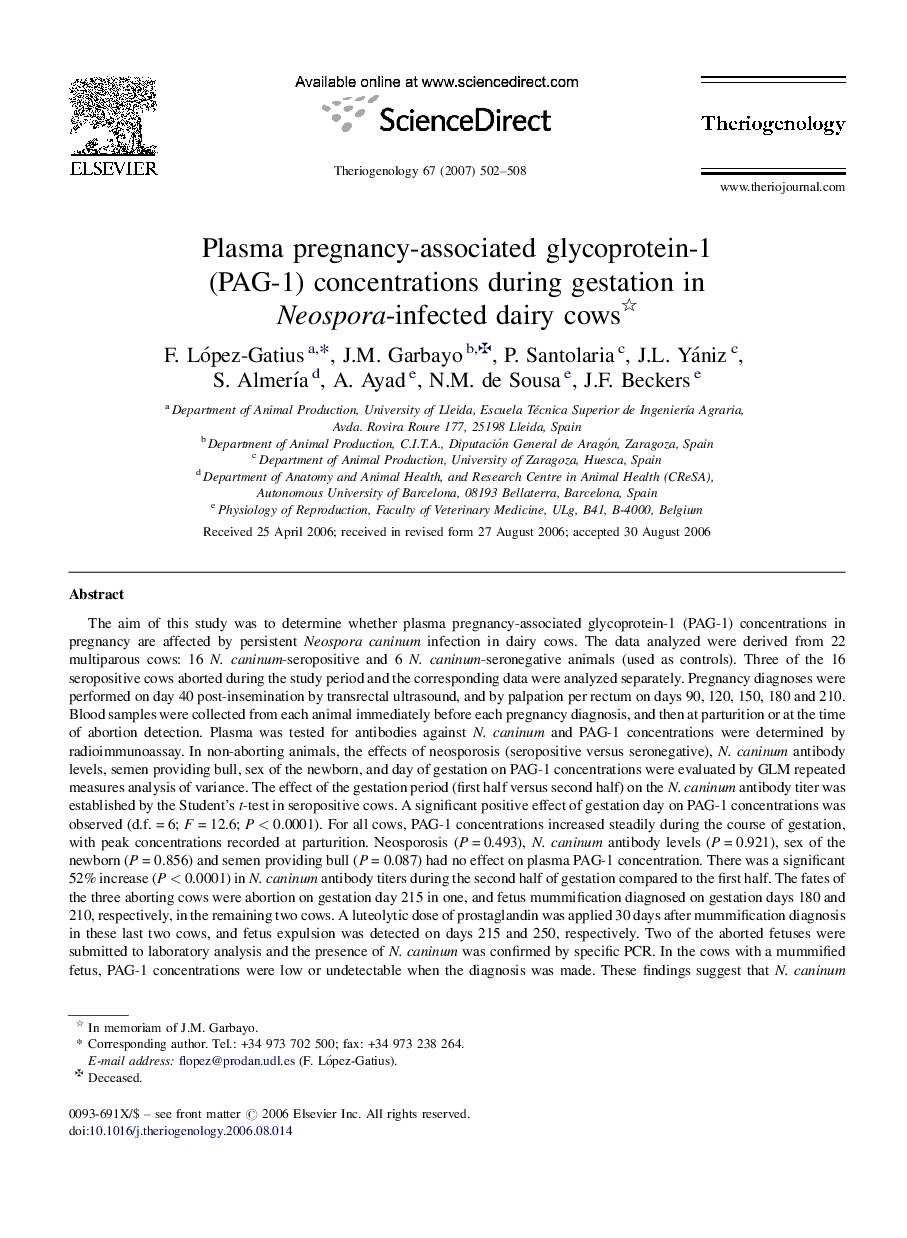| کد مقاله | کد نشریه | سال انتشار | مقاله انگلیسی | نسخه تمام متن |
|---|---|---|---|---|
| 2096514 | 1082170 | 2007 | 7 صفحه PDF | دانلود رایگان |

The aim of this study was to determine whether plasma pregnancy-associated glycoprotein-1 (PAG-1) concentrations in pregnancy are affected by persistent Neospora caninum infection in dairy cows. The data analyzed were derived from 22 multiparous cows: 16 N. caninum-seropositive and 6 N. caninum-seronegative animals (used as controls). Three of the 16 seropositive cows aborted during the study period and the corresponding data were analyzed separately. Pregnancy diagnoses were performed on day 40 post-insemination by transrectal ultrasound, and by palpation per rectum on days 90, 120, 150, 180 and 210. Blood samples were collected from each animal immediately before each pregnancy diagnosis, and then at parturition or at the time of abortion detection. Plasma was tested for antibodies against N. caninum and PAG-1 concentrations were determined by radioimmunoassay. In non-aborting animals, the effects of neosporosis (seropositive versus seronegative), N. caninum antibody levels, semen providing bull, sex of the newborn, and day of gestation on PAG-1 concentrations were evaluated by GLM repeated measures analysis of variance. The effect of the gestation period (first half versus second half) on the N. caninum antibody titer was established by the Student's t-test in seropositive cows. A significant positive effect of gestation day on PAG-1 concentrations was observed (d.f. = 6; F = 12.6; P < 0.0001). For all cows, PAG-1 concentrations increased steadily during the course of gestation, with peak concentrations recorded at parturition. Neosporosis (P = 0.493), N. caninum antibody levels (P = 0.921), sex of the newborn (P = 0.856) and semen providing bull (P = 0.087) had no effect on plasma PAG-1 concentration. There was a significant 52% increase (P < 0.0001) in N. caninum antibody titers during the second half of gestation compared to the first half. The fates of the three aborting cows were abortion on gestation day 215 in one, and fetus mummification diagnosed on gestation days 180 and 210, respectively, in the remaining two cows. A luteolytic dose of prostaglandin was applied 30 days after mummification diagnosis in these last two cows, and fetus expulsion was detected on days 215 and 250, respectively. Two of the aborted fetuses were submitted to laboratory analysis and the presence of N. caninum was confirmed by specific PCR. In the cows with a mummified fetus, PAG-1 concentrations were low or undetectable when the diagnosis was made. These findings suggest that N. caninum infection has no effect on placental function in chronically infected, cows not suffering abortion, while PAG-1 measurements in aborting animals provide a useful indication of feto-placental status.
Journal: Theriogenology - Volume 67, Issue 3, February 2007, Pages 502–508